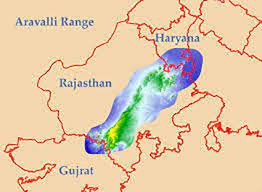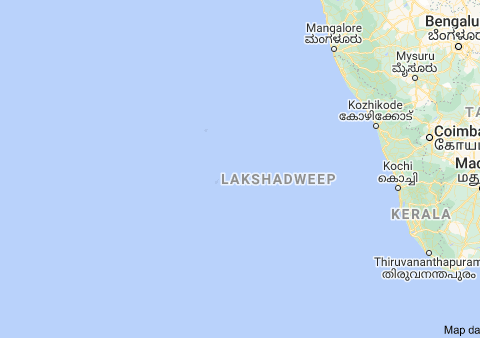
INDIA GREENS PARTY
Towards Making the Country Ecologically and Politically Green!
—
PETITION TO SAVE ARAVALLI ECOSYSTEM, ITS HILLS AND FORESTS
9 October 2022.
To
Mr Narendra Modi, Hon’ble Prime Minister of India
Mr Bhupender Yadav, Hon’ble Minister of Environment, Forest and Climate Change
Mr Hardeep Singh Puri, Hon’ble Minister of Housing and Urban Affairs
Mr Arvind Kejriwal, Hon’ble Chief Minister of NCT of Delhi
Mr Manohar Lal Khattar, Hon’ble Chief Minister of Haryana
Mr Ashok Gehlot, Hon’ble Chief Minister of Rajasthan
Mr Yogi Adityanath, Hon’ble Chief Minister of Uttar Pradesh
Mr Bhupendrabhai Patel, Hon’ble Chief Minister of Gujarat
Subject: PETITION FOR THE PROTECTION AND CONSERVATION OF THE ARAVALLI ECOSYSTEM, ITS HILLS AND FORESTS.
Hon’ble Leaders,
Greetings from the India Greens party!
The India Greens Party is a pan-India Green political party, registered with the Election Commission of India as a political organisation. We are committed to raising political and environmental awareness about the issues related to ecological wisdom, sustainability, social justice, participatory democracy, nonviolence and respect for diversity.
Here, in this Petition, we wish to draw your attention towards the importance of the Aravalli ecosystem and the threats it is facing.
Our demand is that your governments and the administration protect the Aravalli forests and hills from disappearing in the states of Delhi, Haryana, Rajasthan, and Gujarat.
NCR DRAFT PLAN 2041 IS ANTI-ENVIRONMENT & ANTI-PEOPLE
The new NCR Draft Regional Plan 2041 that is to replace the 2021 NCR Regional Plan which has been in force since 2005 threatens the Aravallis and other crucial natural ecosystems in four North Indian states. This regressive 2041 NCR Draft Plan, if implemented, will destroy more than 70 percent of the Aravallis and other crucial natural ecosystems in 25 districts of India’s National Capital Region consisting of Delhi, 14 districts in Haryana, 8 districts in Uttar Pradesh and 2 districts in Rajasthan. At a time when India is one of the most vulnerable nations in the world to climate change, it is the responsibility of our planners and government authorities to strengthen laws and plans to protect our carbon sinks, green lungs and critical water recharge zones like our mountain ecosystems, wetlands, forests, rivers, lakes, water bodies etc instead of diluting provisions that give these carbon sinks protection under the law.
Government should call for a stakeholder consultation to discuss and strengthen the NCR Draft Regional Plan 2041. Heads of organisations such as WWF India, Development Alternatives, Centre for Science & Environment, World Resources Institute; Ecologists, Environmentalists Lawyers Citizens’ Movements, Planners, Students, Members of the civil society and Green political and environmental organisations like the India Greens Party should be invited to give their views on this NCR Draft Plan 2041.
Citizens should have a say in matters that directly affect them and it’s the government’s duty to ensure we are heard before going ahead with any plans. It is time to make ecological conservation a central part of our urban planning. We recommend making a new NCR Regional Plan which incorporates all the suggestions by experts and does away with the environmental dilutions in the existing NCR Draft Plan 2041 to ensure more protection to our natural ecosystems so that quality of life for residents of India’s National Capital Region improves.
WHY PROTECTING ARAVALLIS IS CRITICAL FOR NORTH INDIA?
Delhi-NCR and the entire North Indian belt is already one of the most polluted and water stressed regions in India. As global warming and climate change intensify, this region will get more impacted. Air pollution of India’s National Capital Region will become worse if the Aravallis are destroyed as these are the green lungs and only barrier protecting millions of people living in NCR cities and the gangetic plains from the sand storms coming from the Thar desert.
The Aravallis and natural ecosystems in Delhi, Haryana and Rajasthan are highly threatened with illegal mining going on and encroachments. Mining has wiped out 31 Aravalli hills i.e. 25% of the hill range in Rajasthan creating gaps for the Thar desert to inch closer towards India’s National Capital region. Aravallis with their natural cracks and fissures have the potential to put 2 million litres of water per hectare in the ground every year and thus act as a critical water recharge zone for the water starved Gurgaon, Faridabad, Delhi, other NCR cities, South Haryana and Rajasthan where the extraction is 300% more than the recharge and ground water levels are dangerously low.
A recent survey of the remnant Aravalli forests of Gurugram, Faridabad and Delhi conducted in 2019 revealed that they harbour an astonishingly rich diversity of wildlife with relatively high densities of rare mammal species of the Aravallis such as Honey-badger, Indian fox, Ruddy mongoose, Hyena, Grey langur etc. Forming a critical wildlife corridor, these contiguous forests, including Mangar Bani, a sacred grove near the Gurugram-Faridabad highway, need immediate protection to ensure wildlife can thrive in this region. Natural ecosystem of the Aravallis in Delhi, Haryana and Rajasthan are a critical wildlife habitat & corridor and a biodiversity hotspot with 400+ species of native trees, shrubs, grasses and herbs; 200+ native & migratory bird species, 100+ butterfly species, 20+ reptile species and 20+ mammal species includingleopards, jackals, neelgais, porcupines, mongoose, civet cats as well as other wildlife like insects, amphibians etc.
OBJECTIONS AGAINST & SUGGESTIONS TO STRENGTHEN NCR DRAFT REGIONAL PLAN 2041
1) REPLACEMENT OF ‘NATURAL CONSERVATION ZONE’ WITH ‘NATURAL ZONE’
Objection (a): According to the Draft Regional Plan 2041, the ‘Natural Zone’ will comprise natural features such as mountains, hills, rivers, water bodies and forests which are notified for conservation under central or state laws and recognized as such in land records. The relevant provision states that, “The natural features shall be such as are notified for preservation or conservation under the relevant Central or State laws and recognized as such in the land records over time.”
In contrast, the NCR Regional Plan 2021, which is currently in force since 2005 – was crystal clear that ALL Aravallis, forest areas and all water bodies were to be included in the ‘Natural Conservation Zone’ (NCZ). The relevant description of the NCZ in the NCR Regional Plan 2021 is as follows: “The major natural features, identified as environmentally sensitive areas are the extension of Aravalli ridge in Rajasthan, Haryana and Delhi, forest areas, the rivers and tributaries of Yamuna, Ganga, Kali, Hindon and Sahibi, sanctuaries, major lakes and water bodies such as Badkal lake, Suraj Kund and Damdama in Haryana Sub-region and Siliserh lake in Rajasthan, etc. These areas have been demarcated as Natural Area Conservation Zone in the Regional Plan-2021.”
The replacement of the ‘Natural Conservation Zone’ under the 2021 Regional Plan with ‘Natural Zone’ in the Draft Regional Plan 2041, by dropping the term “Conservation” is a regressive step as it signals that conservation is no longer important in the NCR Regional Plan. All existing Sub-Regional Plans and Master Plans are already using the term’ Natural Conservation Zone’ (NCZ), and changing the term now will lead to further confusion in the implementation of these plans.
Objection (b): The NCR Regional Plan is a guiding document for sub-regional plans that states develop. But if the guiding document itself is diluted, then obviously states can dilute further. The 2021 Regional Plan was very clear and detailed in defining and demarcating the areas under the ‘Natural Conservation Zone’. In the 2021 plan, the ‘Natural Conservation Zone’ covered all areas in the entire Aravalli range in Delhi, Haryana and Rajasthan including hills, forest areas, rivers & tributaries, major lakes, water bodies and ground water recharging areas irrespective of the status of their land records. Most forests in south Haryana, which includes the Aravalli region, are not notified forests and these are also not recorded as ‘forest’ in the revenue records. But after a 1996 Supreme Court judgement, which expanded the definition of ‘forest’, these areas are now treated as ‘forest’ and hence qualify to be conserved. However, under the new Draft Regional Plan 2041, nearly 70-80% of the current ‘Natural Conservation Zone’ area under the 2021 Regional Plan will not be eligible to be part of the ‘Natural Zone’ under the new Draft Regional Plan 2041. This will have adverse implications for the air quality, groundwater recharge, forest cover and wildlife habitat in Delhi, Gurgaon, Faridabad as well as the rest of South Haryana and Rajasthan.
Suggestion (a):
We strongly suggest that the term “Natural Conservation Zone” (NCZ) used in 2021 Regional Plan be retained in new Regional Plan 2041 and not be replaced with ‘Natural Zones’ as areas categorised as ‘Natural Zones’ in Draft Regional NCR Plan 2041 do not require mandatory conservation like ‘Natural Conservation Zone’ areas which the states are bound to conserve as the current NCR Regional Plan 2021 restricts any construction
to only 0.5% of the total Natural Conservation area. The zoning restriction on construction in the NCZ of 0.5%, MUST be retained in the NCR 2041 plan.
Suggestion (b): We further suggest that the definition and provisions for the “Natural Conservation Zone” as present in the Section 17.4.2 of the 2021 NCR Regional Plan be retained in toto/as it is, in the new Regional Plan 2041.
2) RESTRICTION OF NATURAL AREAS TO ONLY THOSE AREAS THAT ARE NOTIFIED UNDER CENTRAL/STATE ACTS AND RECOGNIZED IN REVENUE RECORDS
Objection: The new Draft Regional Plan 2041 restricts the natural features that will have the protection to only those features that are (a) notified under state/central acts AND are also (b) recognized in revenue records. This is an unduly harsh restriction that will exclude over 80% of forests and Aravallis and even rivers, flood plains and waterbodies – as very few of them meet both the criteria proposed – of notification and presence in revenue records. In fact, many do not meet either criterion. For example, most Aravalli hill areas in Haryana are neither notified as such, and are mentioned in the revenue records as ‘Gair Mumkin Pahar’ and ‘Bhood’. Similarly, most of the forest cover in Haryana is neither notified as ‘forest’ nor mentioned as ‘forest’ in the revenue record. Almost 50,000+ acres of the Aravallis in Haryana have not yet been notified as deemed forests under any law. The Honourable Supreme Court has repeatedly directed the state of Haryana to identify forests as per dictionary meaning in Godavarman (1996), Lafarge (2011) judgements of the Supreme Court but the government has failed to carry out this exercise. Therefore, such restrictive eligibility criteria will exclude a major chunk of the Aravallis and the natural features from protection under the new NCR Draft Regional Plan 2041 and leave them open to the ravages of real estate etc.
Suggestion: The qualification provided should be kept inclusive as it is in the NCR Regional Plan 2021 and not made restrictive as in the new Draft Regional Plan 2041.
3) IDENTIFICATION OF ‘NATURAL ZONES’ USING REVENUE RECORDS AND GROUND TRUTHING EXERCISES
Objection (a): According to the new Draft Regional Plan 2041, “Natural Zones” will be identified by the states using revenue records and ground truthing exercises. This is very troubling as the state governments in the past have tried to dilute the definition of the Aravallis. For instance, a state-level committee headed by the Haryana Principal Secretary, Town and Country Planning in a meeting held in August 2021 for “Ground-Truthing of Natural Conservation Zone” in the Haryana sub-region of India’s National Capital Region stated that revenue records of Faridabad district only identify “Gair Mumkin Pahar” (i.e. uncultivable hilly areas) and do not make any mention of the term “Aravalli”. The committee has asked officials to identify the areas under Aravallis on the basis of a 1992 notification of the Union Ministry of Environment, Forest and Climate Change (MoEFCC) that only covers the areas of the old Gurgaon district (currently Gurugram and Nuh districts), thereby wiping out the existence of 20,000 acres of Aravalli forests in Faridabad.
Objection (b): For natural entities, you don’t need a notification, and the government must understand this. There is no notification saying ‘this is the Himalaya’ or ‘this is the Brahmaputra’. The state of Haryana is yet to complete the exercise of defining and marking forest land according to the Supreme Court’s 1996 judgment in T.N. Godavarman Thirumulpad v. Union of India which states that: “The word ‘forest’ must be understood according to its dictionary meaning.” Just because the Haryana government has not conducted the exercise to identify forests, it does not mean that the state does not have forests.
Suggestion (a): The term ‘forest areas’ must be included in the new Draft Regional Plan 2041 and must cover all three categories of forest – notified, recorded, or deemed as per dictionary meaning, in compliance with the Godavarman (1996) and Lafarge (2011) judgements of the Supreme Court.
Suggestion (b): All Aravalli hills and forests and other natural ecosystems such as wetlands, rivers, lakes, water bodies etc irrespective of whether they are notified or not or mentioned in the revenue records or identified in ground truthing exercises, must get protection under the new Draft Regional Plan 2041.
4) EXCLUSION OF TERM “ARAVALLI”
Objection: The term “Aravalli” was present in NCR Regional Plan 2021 and was part of the Natural Conservation Zone, but has been excluded from Draft Regional Plan 2041.
Suggestion (a): The term “Aravalli” must be restored and included as an important zone for conservationin the new NCR Regional Draft Plan 2041.
Suggestion (b): The term “Gair Mumkin Pahar” (i.e. uncultivable hilly areas) must be included in the new Draft Regional Plan 2041 as it is one of the terms that covers Aravalli hills in the revenue records in Delhi, Haryana and Rajasthan.
5) EXCLUSION OF “FOREST AREAS”
Objection: The term “Forest areas’ was included in NCR Regional Plan 2021, but has been excluded from the Draft Regional Plan 2041.
Suggestion (a): The term “Forest areas’ which was included in the NCR Regional Plan 2021, but has been excluded in the new Draft Regional Plan 2041 should be restored back.
Suggestion (b): It should be further clarified in the new Draft Regional Plan 2041 that ‘forest areas’ include notified forests, recorded forests, and other forests. This is because the Supreme Court has repeatedly directed the states, including Haryana to identify forests that are notified under any act, or recorded as forest in government records, or simply meet the general dictionary meaning of forests. The term ‘forest areas’ must cover all three categories of forest – notified, recorded, or deemed as per dictionary meaning, in compliance with the Godavarman (1996), and Lafarge (2011) judgements of the Supreme Court.
6) DECLINE OF FOREST AREA AND DELETION OF FOREST COVER TARGET OF 10%
Objection: Area under forest has declined from 4.02% reported in NCR Regional Plan 2021 to 3.27% under Table 3.1 in section 3.2.2 of Draft Regional Plan 2041. Even the target, “total forest cover proposed to be 10% of the total area of the region”ofthe NCR Regional Plan 2021 has been dropped from Draft Regional Plan 2041. This is a regressive step.
Suggestion: Target of 10% total forest cover for the NCR must be restored and included inthe new Draft Regional Plan 2041.
7) WATER BODIES
Objection: The term “water bodies created by the action of nature” is unduly restrictive in the new Draft Regional Plan 2041. There are very few waterbodies created exclusively by the action of nature. Most of the waterbodies in the NCR have a human element in their history. Famous lakes such as Badkhal lake, Surajkund, Damdama lake in Haryana all have bunds and excavation and have modified the “action of nature”. Most village ponds are in the form of ‘johads’, but may not have been strictly created by the “action of nature”, or at least that may not be apparent due to maintenance work done by humans over time including excavation and bunding.
Suggestion: The qualification “created by the action of nature” in Draft Regional Plan 2041 should be deleted.
8) RIVERS, TRIBUTARIES, FLOOD PLAINS
Objection: NCR Regional Plan 2021 included rivers, their tributaries and their flood plains in the Natural Conservation Zone and even named some rivers such as Yamuna, Ganga, Kali, Hindon and Sahibi. However, the Draft Regional Plan 2041 has dropped the coverage of tributaries and also dropped the flood plains. This is objected to as the rivers, the tributaries and their flood plains are all crucial for the water security and the protection of the riverine floodplain habitat is critical for protection of riverine biodiversity.
Suggestion: Conservation of rivers and their tributaries and flood plains and flood prone areas must be included back in draft regional plan 2041.
9) EARMARKING OF WASTELANDS AND VILLAGE COMMON LANDS FOR FOREST COVER
Objection: NCR Regional Plan 2021 stated in Section 17.4.2 that: “All wastelands identified in the existing Land Use 1999 and proposed Land Use Plan 2021 i.e. irrigation canals, drains, roads, railway lines and village common lands are proposed to be brought under forest cover.” However, this provision has been deleted from the Draft Regional Plan 2041. Citizens object to this deletion.
Suggestion: Citizens demand that the above provision be restored and included in the new Draft Regional Plan 2041.
10) CHANGE OF LAND USE
Objection: The 2041 NCR Draft Plan has been made without doing a land use change analysis of the Natural Conservation Zone (NCZ).
Suggestion: Land use maps, existing and proposed must be made an integral part of the new NCR Draft Regional Plan 2041 how these have been part of all previous NCR Regional Plans. The land use change analysis of the NCZ must be done to assess the extent of change and only then should the 2041 plan be approved.
With Green wishes,
Nazeema AK/Rajendra Minj
Co-Presidents, India Greens Party Website: www.indiagreensparty.org & contact@indiagreensparty.org
(India Greens Party is registered with the Election Commission of India under Section 29A of the Representation of the People Act, 1951. Registration Number: 56/476/2018-19/PPS-I, effective from 18/07/2019.)
Registered Office: 104, Vardhman Complex, 1st Floor, LSC, Savita Vihar, Delhi-110092.
National Head Office: Greendham Anandi-Chait, Indra-Balbhadra Parisar, Unchir-Dunktok, Devprayag-Bubakhal State Highway-31, Patty-Idwalsyun, PO-Ghurdauri, Distt-Pauri Garhwal, Uttarakhand, INDIA. PIN-246194.
Email: indiagreensparty@gmail.com, contact@indiagreensparty.org Website:https://indiagreensparty.org
Mobile phone (Office Secretary): +91-7417245468





You must be logged in to post a comment.